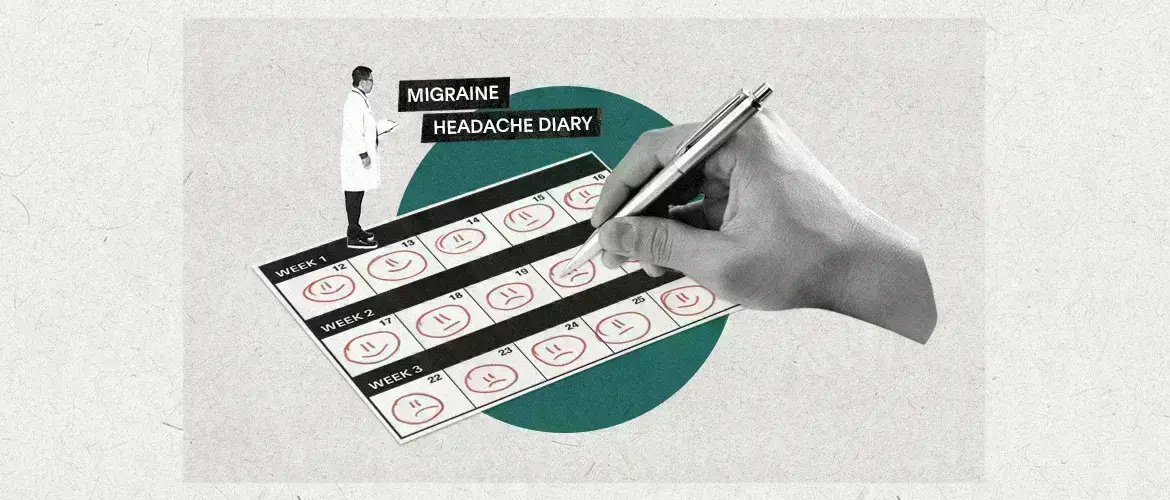The armamentarium for migraine prevention has expanded considerably in recent years with the introduction of targeted agents against the calcitonin gene-related peptide (CGRP) pathway. Today, preventive treatment selection can be better tailored to individual patients based on their characteristics, needs, and preferences. Dr. Cristina Tassorelli, a neurologist at the University of Pavia, Italy, offered a simplified and practical approach to prophylactic migraine therapy selection in her talk entitled “Preventive Treatment of Migraine Made Easier.”
When to Offer Preventive Migraine Treatment
Since not all people living with migraine require prophylactic treatment, an important first step is to recognize when a preventive strategy is indicated. As a general rule, a migraine preventive strategy should be initiated when migraine interferes in a relevant way with a patient’s routine and quality of life despite the appropriate management of triggers and acute treatment of attacks. An easy-to-follow stepped algorithm offers guidance on when to consider and when to offer preventive treatment to people with migraine based on their headache frequency and severity, and response to acute medications.1
| Headache-related impairment | Headache frequency, days per month | ||||
|---|---|---|---|---|---|
| 2 | 3 | 4–5 | 6–10 | 11–14 | |
| None or mild, good response to acute medications | Consider | Offer | Offer | ||
| Moderate, variable response to acute medications | Consider | Offer | Offer | Offer | |
| Severe/bed rest | Consider | Offer | Offer | Offer | Offer |
Table adapted from Lipton RB, Silberstein SD. Headache (2015).
Factors Influencing Preventive Treatment Selection
There are myriad factors that influence the choice of a specific treatment to offer from the toolbox of preventive medications that are now available. These include patient factors, such as the type of migraine and the presence of comorbidities, medication-specific factors including efficacy, safety, and drug interactions, and access considerations, such as cost and availability. A simplified approach to preventive migraine treatment selection has been proposed using a color-coding system to classify medications that offer the best balance of efficacy and tolerability.2 The classification is based on the results of a network meta-analysis on more than 32,000 migraine patients in 74 controlled trials.2
Targeting the CGRP Pathway
Although the traditional benchmark for preventive migraine treatment efficacy is a ≥50% reduction in monthly migraine days, Dr. Tassorelli pointed out that the anti-CGRP monoclonal antibodies are pushing this threshold higher. For example, around one in three chronic migraine patients treated with an infused CGRP monoclonal antibody achieved a ≥75% reduction in monthly migraine days, and this effect was observed as early as the first 1 to 4 weeks of treatment.3 An important benefit of the anti-CGRP monoclonal antibodies over conventional oral preventive treatments is that they have a favourable safety and tolerability profile, which translates into significantly lower discontinuation rates due to adverse effects in real-world patients with migraine.4
A ≥75% reduction in monthly migraine days is now achievable for many people living with migraine
The oral gepants that block the CGRP pathway have also demonstrated a high balance of efficacy and tolerability for migraine prevention. Dr. Tassorelli cited emerging head-to-head data suggesting similar efficacy for gepants compared to an anti-CGRP monoclonal antibody for prevention of episodic migraine.5 Although botulinum neurotoxin therapy is not as recent as the anti-CGRP agents, there continues to be evidence also supporting a persistence of effectiveness over time,6 making toxin therapy an important tool in the 2023 migraine prevention toolbox.
Is Cost Really a Barrier?
Dr. Tassorelli cited European data examining the economic costs of migraine, which are driven mainly by migraine frequency and disability. According to one recent study, the estimated annual savings associated with a reduction of 50% in monthly migraine days is approximately €2,200 per patient for episodic migraine and over €6,500 for chronic migraine.7 When considered from this economic perspective, Dr. Tassorelli stated that the cost of advanced treatments should be less of a barrier to adoption.
A Rational Approach to Migraine Prevention
In countries with limited access to migraine prevention therapies, Dr. Tassorelli advised initiating a recommended first-line conventional oral prophylactic medication, depending on the individual patient’s profile and preference. In general, a 5- to 6-month course of monotherapy should be tried to give these oral agents sufficient time to achieve therapeutic efficacy, unless there is intolerance. Some patients may require a combination of oral preventive therapies, and Dr. Tassorelli advised selecting associations that have complementary modes of action and safety profiles.
In countries where all migraine prevention therapies are available, Dr. Tassorelli suggested shorter monotherapy trials of first- or second-line agents to evaluate their effectiveness (i.e., 1 to 2 months). If these are insufficiently effective or poorly tolerated, additional therapies such as anti-CGRP antibodies, gepants, or botulinum toxin therapy should be considered. Although some patients respond quickly to these advanced therapies, there are some late responders, especially in the setting of chronic migraine; therefore, Dr. Tassorelli suggested giving these at least a 3-month trial to evaluate effectiveness. If response is inadequate, switching between these strategies can be tried, and combination therapies using different modes of action can also be contemplated.
The anti-CGRP monoclonal antibodies are useful in combination strategies since they are not associated with drug interactions
Headache calendars and/or patient-reported outcome measures can be useful for evaluating preventive treatment efficacy in the routine clinical setting. Before concluding that a preventive treatment has failed and switching strategies, clinicians should review the diagnosis, consider comorbidities that could be impairing a patient’s response to treatment, and review dosing and adherence. Dr. Tassorelli also highlighted the importance of patient education, including the appropriate use of acute medications for the treatment of migraine attacks while minimizing the risk of medication overuse headache.
Our correspondent’s highlights from the symposium are meant as a fair representation of the scientific content presented. The views and opinions expressed on this page do not necessarily reflect those of Lundbeck.




